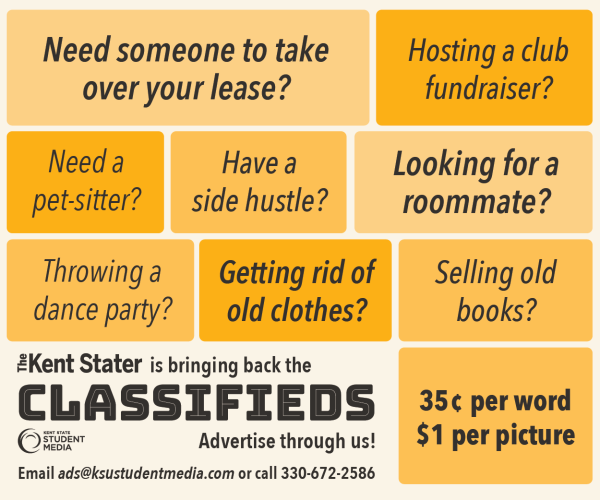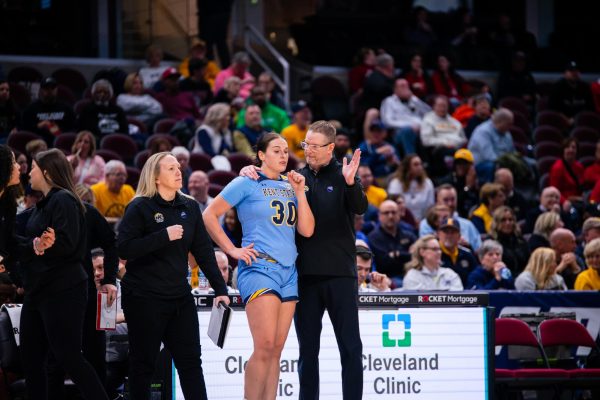Little store, big responsibility
October 26, 2005
Zak Richmond, co-owner of Main Street Coneys, takes a break from the busy lunch rush yesterday afternoon. Richmond and other small business entrepreneurs make up 70 percent of all businesses in the United States.
Credit: Steve Schirra
When Zak Richmond became a co-owner of Main Street Coneys in Kent, he never imagined the amount of work he would have to do to get the business up and running.
“(Starting a business) is extremely hard,” Richmond said. “There are long hours and long days, but you learn so much.”
The 25-year-old entrepreneur graduated from the University of Akron with a degree in finance. He worked his way through college at a restaurant in Stow.
“I became friends with the owner and he showed me how things worked behind the scenes,” Richmond said. “I decided then that I wanted to open another restaurant with him.”
Julie Messing, instructor and coordinator of entrepreneurship, said that certain steps must be taken to begin your own business.
First and foremost – though it may seem obvious – have a good, solid idea, Messing said.
“If you have an idea, you’re one of the lucky ones,” she said.
Then, ask the questions: Does this idea I have solve a problem? Will it solve someone’s pain? Next, find out if there is a market for his or her idea and how easy it will be for your product or service to be noticed in that market.
If a potential entrepreneur has successfully answered the above questions and found a market for their product, it is time to do a feasibility study.
In a feasibility study, ask:
ƒ-S Does the product/service make sense? What is the overall appeal?
ƒ-S Do you have the organizational skills to handle the work of managing others and getting things done?
ƒ-S What does the market for your product look like? Is competition intense?
ƒ-S Financially, how do you get started?
Messing said there are three types of money used to start a business. The first is called “love money,” or money borrowed from family or friends. The second is “seed money,” which could mean mortgages on your home or collecting donations. The third is “boot-strapping,” which means a person’s credit card gets maxed out and their savings account is drained of any money.
The rest of the capital (money used to start a business) is borrowed through loans. Investors can also put money into the business and hope they get some of it back.
Grants are also an option to finance a new business venture. Messing said the Small Business Innovation Research Grants give about $1 billion a year to fledgling businesses.
“You will go through a lot of painstaking labor to get these grants, but it’s free money,” Messing said.
One bit of advice Messing offered was to establish a board of advisers almost immediately.
“A board of advisers is an informal group of people you can trust,” Messing said. “It’s good to have experts in the industry you’re interested in. You also need a good attorney, accountant and insurance agent.”
One last step is to consider if you want your business to be incorporated, a partnership, sole proprietor or limited liability (LLC).
“Incorporation keeps you separate from your business,” Messing said. “If your business gets sued, no one can touch your personal assets.”
A partnership means you have a co-owner and you will both be responsible for the business.
Being a sole proprietor means you are the only owner and take responsibility for the business.
LLC is similar to incorporation. This option is best if you don’t expect your business to become very large.
Messing admitted it is a lot of work to start a business, but it is well worth it if it works out.
“It’s great being in charge of yourself, but if something goes wrong, knowing that it’s all on you is kind of a sobering thought,” Richmond said.
Contact features reporter Erin Hopkins at [email protected].
























